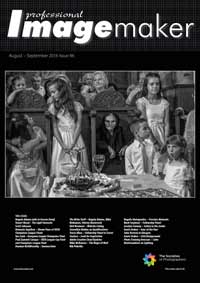articles/Business/look-insp-page3
Look for Inspiration - part 3 of 1 2 3 4 5 6 7 8
by Mike McNamee Published 01/08/2016

Where in the brain does it come from?
While definitions of creativity abound, most seem to reflect Harvard Professor David Perkins' (2001) notion that creativity is breakthrough or "outside-the-box" thinking that involves patterns of thought different from ordinary problem solving. Finding an alternative route when a road is blocked, for example, is certainly problem solving, but few would consider that a creative act. Most descriptions of creativity include the ability to produce novel ideas or products after acquiring a certain proficiency of content knowledge. According to Mihaly Csikszentmihalyi (1996), creative individuals demonstrate mastery of a domain of knowledge or skill followed by an ability to demonstrate diverse thinking and ideational fluency to move that knowledge to a new level. One of the most distinguishing characteristics of Csikszentmihalyi's definition is the capacity to experience "flow'' or to feel a timeless oneness during a creative act. Flow describes the experience of being so engaged in an activity that one achieves a state of concentration resulting in complete absorption with the task.
This description often leads one to believe that creativity is a quality that people possess, not necessarily one they develop. As such, creativity has been traditionally viewed as an innate quality bestowed on us through the luck of the gene pool. Some scholars, including creativity expert, Sir Ken Robinson (2001), agree that creativity comes naturally to certain people - yet they also propose that creativity can and should be taught. The challenge for educators is to move beyond the convergent-thinking tasks that dominate educational practice and are the hallmark of accountability measures. Instead, teachers must design instruction to engage students in divergent thinking to generate multiple and varied approaches to problem solving.
As research in creativity has expanded, it is commonly accepted that activities associated with creative thinking produce differentiated patterns of activity across multiple regions of the brain (Fink et al., 2007). Using the electroencephalogram (EEG) to measure brain activity, Andreas Fink and his colleagues found that during tasks regarded as highly creative, more areas of the brain are active than during tasks that require conventional or customary thinking. Rosa Aurora Chávez-Eakle and her colleagues (2007) also found differentiation in brain activity for individuals who demonstrate high degrees of creativity.
Using the Torrance Tests of Creative Thinking (TTCT) to assess fluency, originality, and flexibility of ideas, these researchers measured differences in cerebral blood flow between highly creative individuals and average control subjects. Subjects who scored in the highly creative range on the TTCT showed significantly greater activity in brain structures involved in cognition, emotion, working memory, and novelty response, thus providing additional evidence of specific neural networks associated with creative thinking.
Please Note:
There is more than one page for this Article.
You are currently on page 3
- Look for Inspiration page 1
- Look for Inspiration page 2
- Look for Inspiration page 3
- Look for Inspiration page 4
- Look for Inspiration page 5
- Look for Inspiration page 6
- Look for Inspiration page 7
- Look for Inspiration page 8
1st Published 01/08/2016
last update 09/12/2022 14:56:05
More Business Articles
There are 0 days to get ready for The Society of Photographers Convention and Trade Show at The Novotel London West, Hammersmith ...
which starts on Wednesday 15th January 2025





